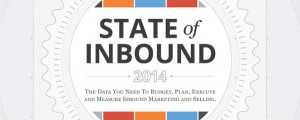Employee benefits can have a significant impact on wealth accumulation, but the International Foundation of Employee Benefits Plans reports that 80% of companies struggle to get employees to read benefits materials. If you don’t correctly understand your company’s employee benefits policy, you can’t take full advantage of it. In the end, you could impede your retirement plans.
This is especially true for high earners. While the majority of workers find it difficult to contribute the maximum amount to their 401(k)s annually — which is $ 19,500 in 2020, plus another $ 6,500 for anyone turning 50 or older — that limit is not enough for high earners to save for retirement.
For example, consider an employee with an annual income of $ 50,000 who saves 20% toward retirement. That $ 10,000 contribution is well below the annual 401(k) limit, and this person can invest the entire balance using a single plan. But take someone who makes $ 500,000 annually. They would max out their annual 401(k) contributions by saving less than 4% of earnings for retirement, which is likely not enough to maintain their standard of living in retirement. If they would like to save the same 20% — or $ 100,000 per year — toward retirement, they need to consider other options.
That’s why it’s important to understand all aspects of your company’s employee benefits policy. You’ll soon discover that there are other ways to save.
3 Useful Company Employee Benefits Policies for High Earners
The most advantageous — and often overlooked — benefits companies offer employees that are particularly useful for high earners are mega backdoor Roth contributions, health savings accounts (HSAs), and deferred compensation. Here is a quick breakdown of each benefit:
1. Mega Backdoor Roth Contributions
While a mega backdoor Roth won’t provide immediate tax benefits, the advantage over time can be tremendous. While employees are limited in terms of what they can contribute to 401(k) accounts, the lesser-known 401(k) contribution limit for all types of contributions — including employer contributions — is much higher. In truth, this can be one of the best benefits companies offer their employees.
With mega backdoor Roth contributions, high earners can put up to $ 57,000 a year into a 401(k) — plus another $ 6,500 for anyone turning 50 or older. This is possible if your employer allows you to “top off” your 401(k) with after-tax contributions that can be immediately converted into a Roth 401(k) or Roth IRA. In essence, this allows you to set aside tens of thousands of dollars in a Roth account.
A combination of traditional and Roth accounts gives you control over how much you’ll pay in taxes when you retire. For example, you can withdraw from a traditional 401(k) and pay income tax up to a certain tax bracket, say the 24% rate. To avoid the big jump from the 24% to the 32% tax bracket, you can make ends meet by withdrawing funds from your Roth account.
2. Health Savings Accounts
You may be wondering why HSAs are on this list since they are an account used to pay medical expenses. However, HSAs are the most tax-advantaged accounts because they combine the best aspects of traditional and Roth IRAs. An HSA allows you to contribute up to $ 3,350 for individuals and $ 7,100 for families in 2020 — without paying federal income tax (state income tax rules differ). The account also grows tax-free, and withdrawals for qualified medical expenses are not subject to taxes. HSAs are the only account that delivers a triple tax advantage.
High earners can take advantage of the biggest benefit HSAs offer: tax-free compound growth. Because high earners typically have enough cash flow to cover medical expenses out of pocket, they can contribute the max amount to their HSAs and cover current medical expenses with money outside the accounts. HSAs can be rolled over year after year and invested like an IRA, which provides a tremendous opportunity for growth.
For example, let’s say you contribute $ 3,550 every year for 10 years between the ages of 20 and 30. You stop contributing because you switch to a traditional healthcare plan, but you continue to allow that HSA to grow. The $ 35,500 contribution could grow to more than $ 500,000 by the time you turn 65 (assuming a 7% annual rate of return between ages 20 to 65). That’s a gain of more than $ 488,000, and it’s completely tax-free as long as you use it for medical expenses. If you are blessed with a healthy retirement, you can make withdrawals for any reason without penalty after you turn 65 — you only pay income tax.
3. Deferred Compensation
Deferred compensation offers another way to make tax-deferred contributions, and it can be especially beneficial for people who are about five years away from retirement. Companies often allow for contributions of up to 50% of base pay and 100% of bonuses. High earners can avoid the top tax bracket while working — and potentially receive those contributions at a lower tax bracket in retirement. Deferred compensation plans bring their own risks, however, and there are strict rules on elections and distributions.
For instance, you can only make contributions during an enrollment window when you must also choose when to distribute those funds. More importantly, your contributions are the property of the company and can (potentially) be used to pay creditors if the company gets into dire financial straits.
One deferred compensation strategy to consider is to participate when you are only five years or less from retirement. This gives you the tax-saving advantage of deferred compensation while limiting the amount of time your money is exposed to potential creditors. If deferred compensation is an option for you, weigh the pros and cons while having your accountant or financial planner run a tax projection to estimate how much it might help you.
Leveraging the Benefits Companies Offer Employees Strategically
High earners can reap great rewards if they strategically leverage the above benefits companies offer employees. Conversely, high earners may leave money on the table if they don’t think about how they will use those benefits.
One common mistake is to overfund a deferred compensation account for several years and then withdraw the funds in a single year. Although this lowers your tax bill while you make contributions, you will end up paying higher taxes by making a lump-sum withdrawal. Anyone who makes incremental investments must also be patient enough to extract the funds slowly.
Beyond the financial side, there are other considerations to take into account. For example, even though HSAs offer tax benefits, the savings strategy might not match an individual’s healthcare needs. A traditional healthcare plan might work better overall, even if it doesn’t offer the same financial upsides of an HSA.
This underscores the importance of considering your financial picture holistically before making any decisions about benefits. Since things never go exactly as planned, high earners must build flexibility into their benefits strategies while carefully weighing risks and rewards. Understand the nuances of your benefits package, speak to someone from HR about the details, and crunch the numbers to find the best approach.
It might take some time and effort to use benefits strategically, but it’s one of the best personal and professional decisions you will ever make. Why? Because taking full advantage of your benefits can mean the difference between retiring early and working longer than expected.
Not sure whether you’re making the right financial decisions for your future? Take Plancorp’s assessment today.
Business & Finance Articles on Business 2 Community
(40)
Report Post





